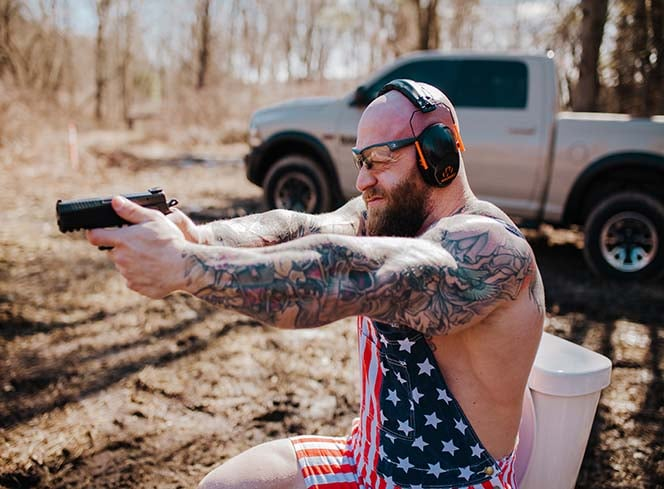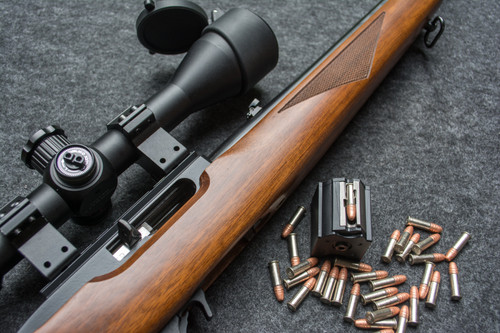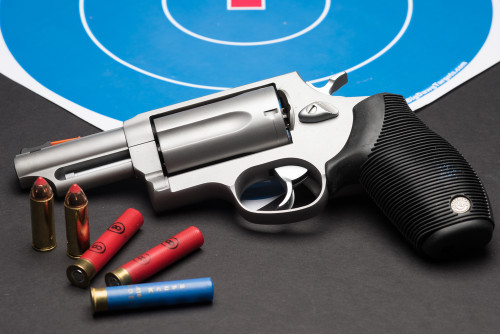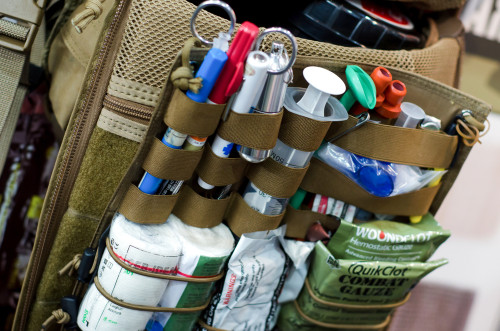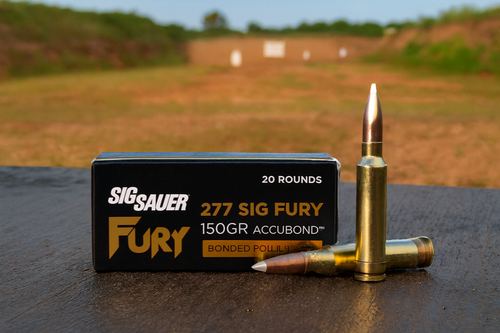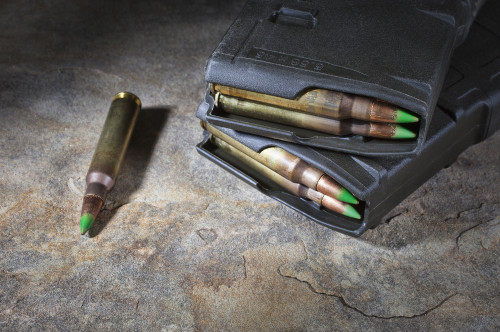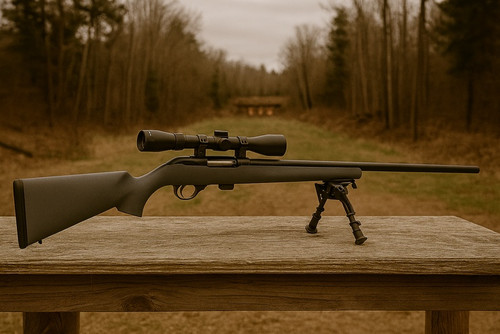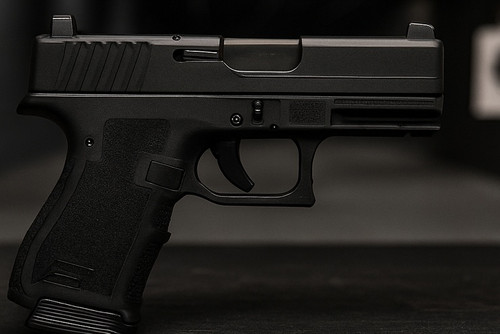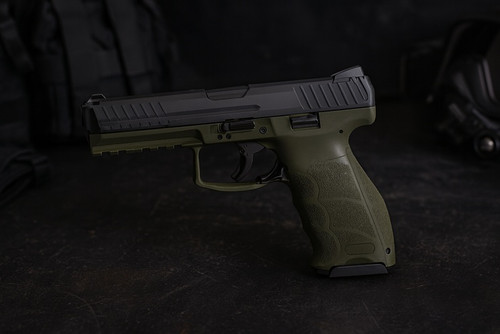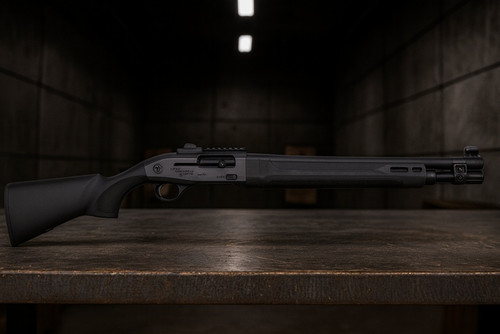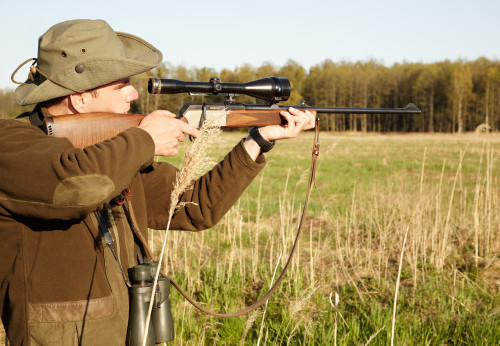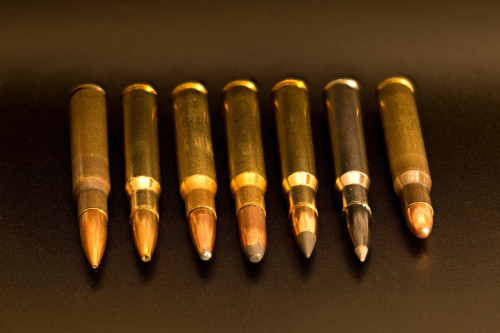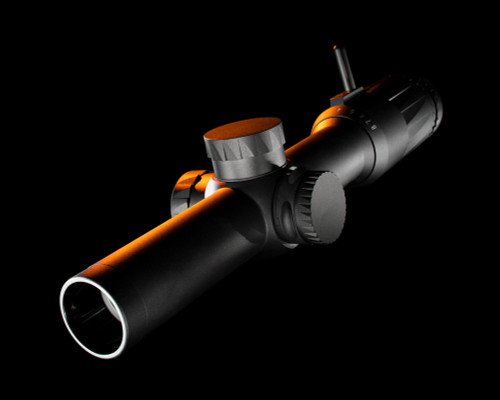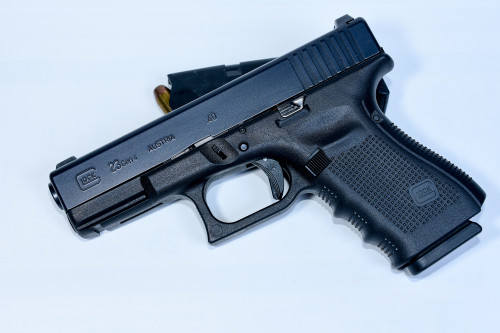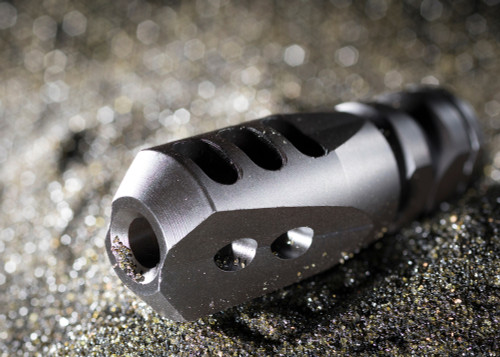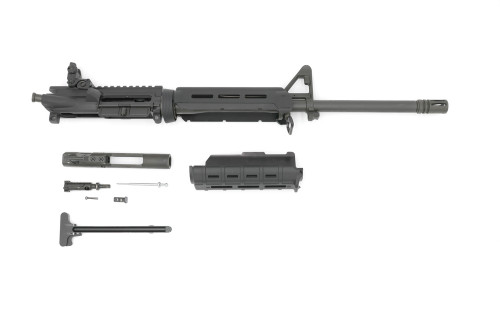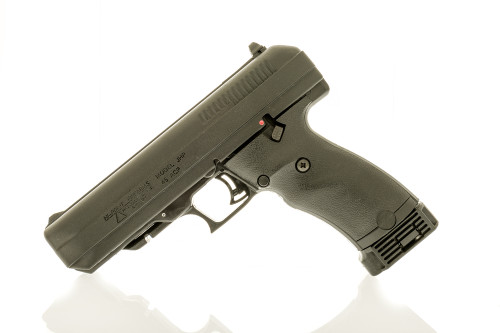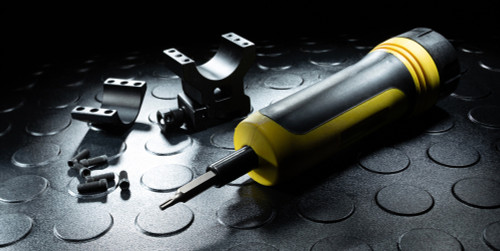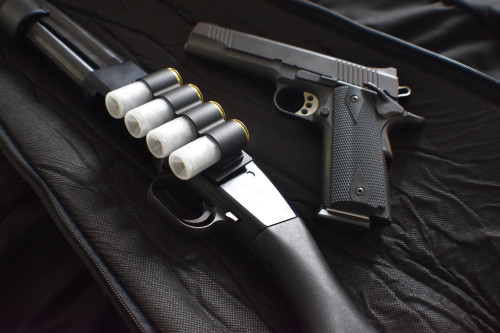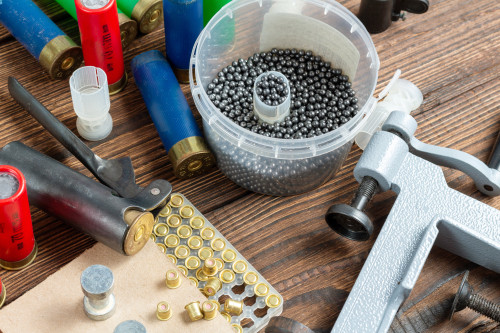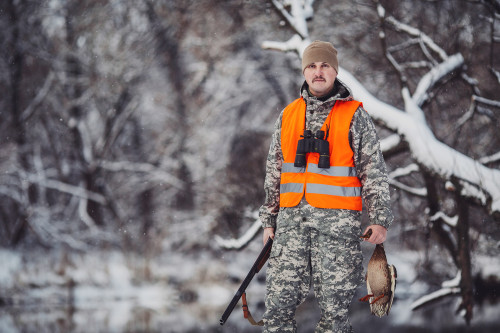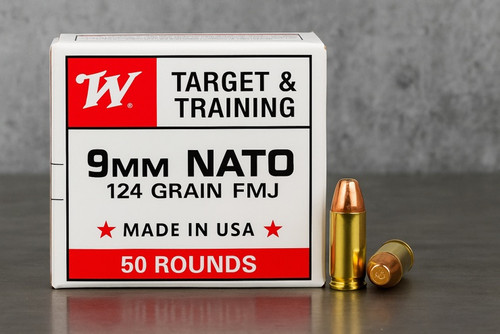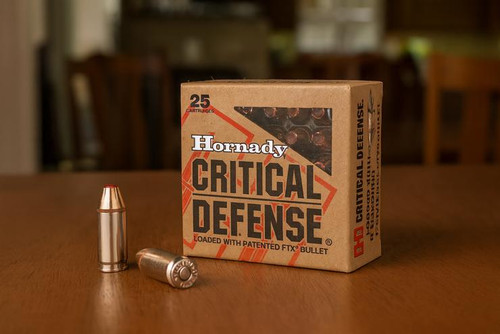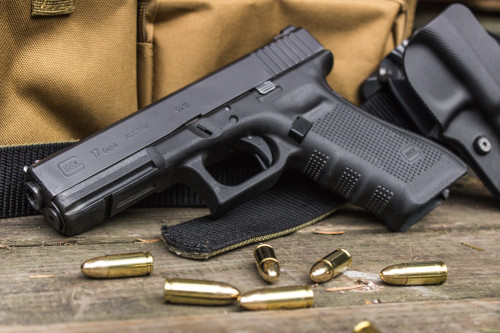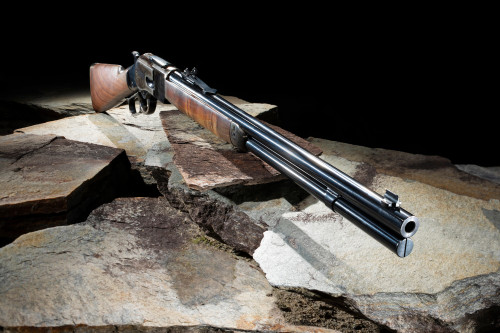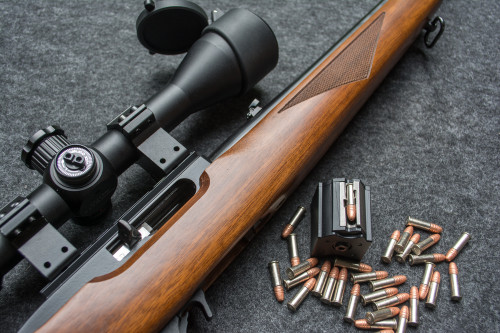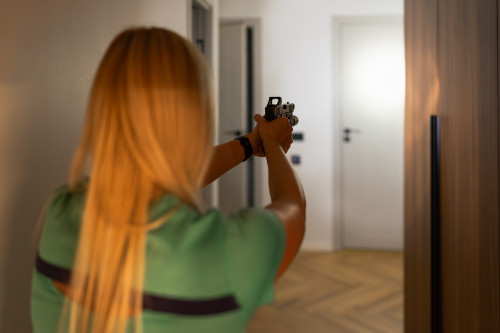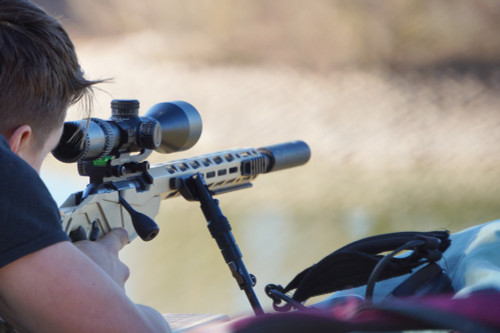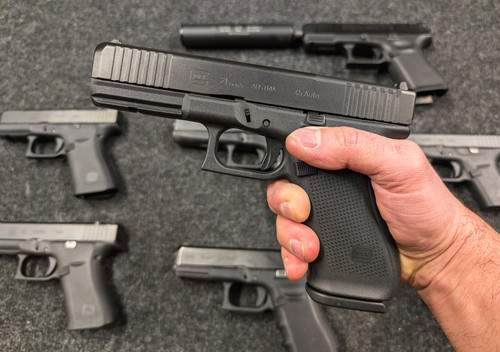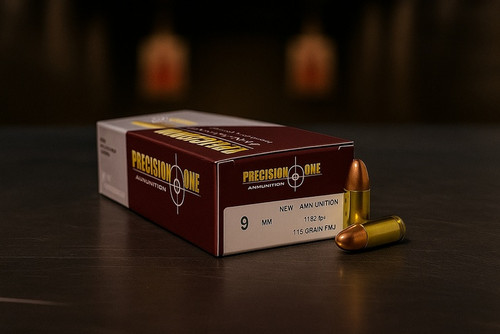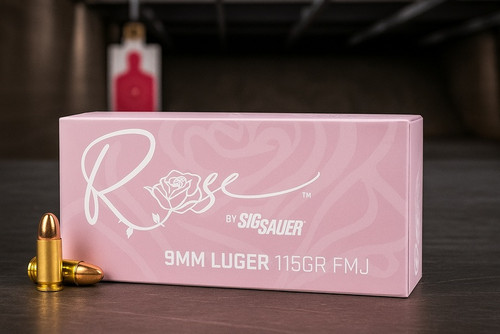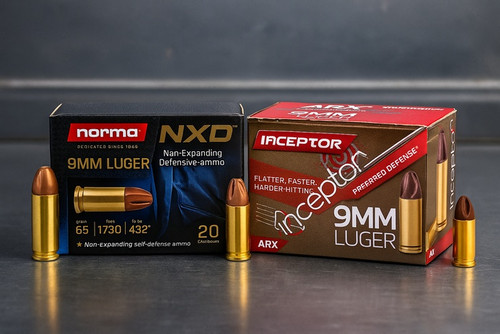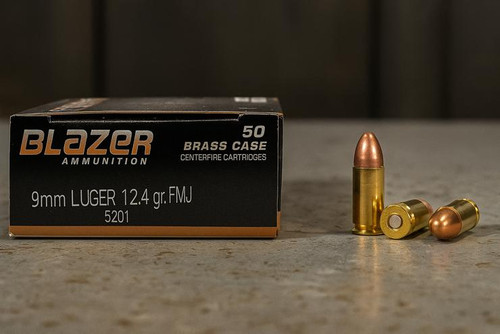Revolvers remain rock-solid options in today's gun market. Despite what some folks might tell you, these "wheel guns" aren't just cowboy relics. They have evolved into sophisticated firearms with modern features—updated materials, ergonomics, and safety systems have improved upon the time-tested mechanics—that make them ideal for new gun owners.
Many people dismiss revolvers as outdated technology, but nothing could be further from the truth. Modern revolvers combine time-tested mechanics with updated materials, ergonomics, and features that benefit beginners.
This guide reviews seven top revolvers made specifically with new users in mind. We've researched options across price points and purposes to help you find your perfect match.
How We Selected and Tested These Modern Revolvers
Our recommendations come from in-depth research and careful evaluation. Pro-Armory’s team has years of experience in military service, competitive shooting, working in gun shops, along with detailed online analysis and community feedback. We consulted firearms instructors who work with new gun owners daily, examined feedback from hundreds of users, and analyzed data on return rates and customer satisfaction.
Selection criteria focused on factors most important to beginners: ease of use, manageable recoil, trigger quality, and overall value. Each revolver was reviewed for performance characteristics using manufacturer data, user reports, and expert insights rather than direct range trials.
Instead of live firing, we relied on documented performance metrics and verified user experiences to assess practical accuracy potential, reliability, and ease of control across different ammunition types.
This approach has made sure that our recommendations serve beginners with varying physical attributes and intended uses like recreational target shooting to home defense and concealed carry.
Why Choose a Modern Revolver as a Beginner?

Revolvers stand out as great starter guns because they're straightforward to operate. You load, point, and pull the trigger – no complicated safeties, slide manipulation, or magazine issues to worry about. They tend to experience fewer malfunctions than semi-automatic pistols and this builds confidence in new gun owners.
The caliber flexibility gives beginners room to grow. Many revolvers can fire multiple types of ammunition – for example, a .357 Magnum revolver can also shoot milder .38 Special rounds. You can start with less recoil and work your way up as your skills develop. Note: Not all revolvers support multiple calibers. Check compatibility before purchase.
Maintenance couldn't be simpler. Revolvers have fewer parts than semi-autos. It is easier to clean and maintain for people just learning about firearms. You won't need to field strip a revolver like you would a semi-auto pistol.
Safety features come built-in with most modern revolvers. The heavy double-action trigger pull serves as a natural safety mechanism, and many models include transfer bar systems that prevent accidental discharges if dropped.
Revolvers are often praised for their straightforward design and reliability, which makes them great for new shooters. If you’re looking for practical carry options, our guide to the best concealed carry revolvers of 2025 highlights top-rated models that balance size, weight, and performance for everyday use.
What to Look For in a Beginner's Modern Revolver
Action Type: Now let us see the difference between Single Action (SA), Double Action (DA), and Double Action/Single Action (DA/SA). Single action means you must manually cock the hammer before firing each shot – this creates a light, crisp trigger pull but adds an extra step. Double action lets you simply pull the trigger to cock and release the hammer in one motion, though the trigger pull is heavier. DA/SA revolvers allow you to fire in double-action mode or manually cock the hammer for a lighter single-action trigger pull.
Caliber Considerations: For beginners, you can start with .22 LR for minimal recoil and cheap practice ammo. The next step up might be .38 Special, and this offers more stopping power with manageable recoil. Many experts recommend .357 Magnum revolvers because they can also fire .38 Special – this gives you room to grow without buying a new gun.
Barrel Length: Longer barrels (4-6 inches) provide better accuracy and reduced recoil. It makes them ideal for learning. Shorter barrels (2-3 inches) offer better concealability but increase felt recoil and reduce sight radius.
Weight and Size: Heavier revolvers absorb recoil better, and so it makes them more comfortable to shoot. However, a revolver that's too heavy becomes tiring during practice sessions. Medium-frame revolvers typically offer the best balance for new users.
Price: Budget .22 LR revolvers start near $200, but centerfire models generally begin around $400. Premium options can exceed $1,000. For beginners, the $400–700 range typically offers good quality.
Brand Reputation: Stick with established manufacturers known for good customer service and parts availability. Ruger, Smith & Wesson, and Taurus offer solid options at various price points.
7 Best Modern Revolvers for Beginners Reviewed
1. Ruger GP100

The Ruger GP100 stands as one of the toughest medium-frame revolvers available today. Built like a tank with its solid stainless steel construction, this revolver feels substantial in your hand without being unwieldy. The weight helps tame recoil and therefore it is easier for beginners to manage even when firing .357 Magnum loads.
What makes the GP100 particularly appealing for new gun owners is its forgiving nature. The cushioned grip reduces felt recoil. The smooth double-action trigger, though heavier than some competitors, breaks cleanly and consistently. This helps develop proper trigger control and this is an essential skill for accurate shooting.
Multiple barrel length options let you customize your experience. Shorter barrels (2.5-3 inches) work better for concealed carry, medium barrels (4 inches) offer a good balance, and longer barrels (6 inches) maximize accuracy and velocity. The full underlug adds weight at the muzzle, further reducing felt recoil and muzzle flip.
The adjustable rear sight on most models allows you to dial in your accuracy as your skills progress. For beginners concerned about long-term value, the GP100's reputation for toughness means this could be the only revolver you'll ever need – it's known to handle tens of thousands of rounds without significant wear.
Price: $659
Specs
- Caliber: .357 Mag/.38 Spl
- Action: Double action/single action
- Capacity: 6 (Some GP100 variants offer 7-shot capacity depending on caliber.)
- Barrel Length: 2.5-6″
- Overall Length: 8-11.5″
- Weight: 36-45 oz
Features
- Fully adjustable rear sight
- Durable stainless steel construction
- Heavy full-lug barrel for recoil control
- Cushioned rubber grip with hardwood inserts
Pros
- Extremely durable construction
- Multiple barrel lengths available
- Good balance between weight and manageability
- Excellent recoil management
Cons
- Heavier than some alternatives
- Slightly higher price range
- Trigger may need smoothing for optimal performance
2. Ruger Wrangler

The Ruger Wrangler brings the cowboy experience to beginners without breaking the bank. This single-action .22 LR revolver combines old-west aesthetics with modern manufacturing techniques. The price point makes it particularly attractive as a first revolver.
For beginners, the .22 LR caliber is perfect – minimal recoil, inexpensive ammunition, and quiet operation create an ideal learning environment. You can practice fundamental skills like sight alignment, trigger control, and proper grip without developing bad habits from flinching due to recoil or noise.
The Wrangler's simple loading and unloading procedure teaches beginners the mechanics of revolvers without overwhelming them. Load one chamber at a time through the loading gate, rotate the cylinder, and repeat. This methodical process builds familiarity with how revolvers work.
Despite its budget-friendly price, the Wrangler doesn't feel cheap. The cold hammer-forged barrel delivers surprising accuracy, and the cerakote finish provides corrosion resistance that older revolvers lacked. The single-action trigger breaks cleanly, giving new shooters a satisfying experience that builds confidence with each successful shot.
Price: $169.99
Specs
- Caliber: .22 LR
- Action: Single action
- Capacity: 6
- Barrel Length: 3.75″ (Wrangler) and 6.5″; 7.5″ available on Super Wrangler variant.
- Overall Length: 8.62-13″
- Weight: 28-34 oz
Features
- Cold hammer-forged barrel
- Fixed sights for simplicity
- Transfer bar mechanism for added safety
- Cerakote finish for corrosion resistance
Pros
- Almost no recoil — great for practice
- Very affordable entry point
- Inexpensive ammo for extended practice sessions
- Fun, western-style shooting experience
Cons
- Single-action only, slower to reload
- Limited stopping power for defense purposes
- Fixed sights not adjustable for different loads
3. Smith & Wesson Model 686 Plus

The Smith & Wesson Model 686 Plus represents premium revolver craftsmanship with features that benefit both beginners and experts alike. The "Plus" designation refers to its seven-round capacity – giving you an extra shot compared to most six-shot revolvers. This L-Frame revolver hits the sweet spot between size, weight, and shootability.
One key advantage for beginners is ammunition flexibility. The 686 Plus chambers both .357 Magnum and .38 Special rounds, allowing new shooters to start with the milder .38 Special loads and graduate to full-power .357 Magnum as their skills and confidence grow. This "two guns in one" approach saves money and extends the revolver's usefulness.
The trigger on the 686 Plus deserves special mention. Even out of the box, the double-action pull is smooth and consistent, and the single-action break is crisp with minimal overtravel. This quality trigger makes accurate shooting easier for beginners who are still developing proper trigger control techniques.
Smith & Wesson's attention to detail shows in the 686's fit and finish. The stainless steel construction resists corrosion and looks great, and the adjustable rear sight allows precise zeroing for different loads and distances. Multiple barrel lengths let you choose between better concealment (2.5") or improved sight radius and velocity (4-7").
Price: $839
Specs
- Caliber: .357 Mag/.38 Spl
- Action: Double action/single action
- Capacity: 7
- Barrel Length: 2.5-7″
- Overall Length: 7.5-12.3″
- Weight: 35-48 oz (heavier models may be less ideal for new shooters seeking a balance between control and portability.)
Features
- Smooth DA/SA trigger
- Seven-round capacity
- Excellent factory adjustable sights
- Multiple barrel length options
Pros
- Superior trigger quality out of the box
- Versatile ammo compatibility
- Extra round compared to most revolvers
- Outstanding accuracy potential
Cons
- Higher cost than entry-level options
- Heavier than lightweight carry models
- May be too large for shooters with smaller hands
4. Taurus Tracker 627
![]()
The Taurus Tracker 627 offers impressive features at a price point that won't scare away beginners. This medium-frame revolver punches above its weight class with a seven-round capacity and innovative recoil management features typically found only on more expensive models.
The standout feature for new shooters is the factory-ported barrel, which reduces muzzle flip and felt recoil by directing gas upward as the bullet exits. Note: Ported barrels increase muzzle blast and noise, which may be uncomfortable during indoor shooting. . This helps beginners maintain better control when firing .357 Magnum loads and speeds up follow-up shots – a valuable benefit for both target practice and defensive scenarios.
Ergonomics received careful attention on the Tracker 627. The rubber grip absorbs recoil energy and provides a secure hold even with sweaty hands. The contoured design accommodates different hand sizes and so this revolver is accessible to more beginners regardless of their physical stature.
The fully adjustable rear sight allows precise zeroing for your preferred ammunition, and the front ramp sight features a high-visibility insert for faster target acquisition. These sight features, combined with the seven-round capacity, make the Tracker 627 a capable all-around revolver that beginners won't quickly outgrow as their skills advance.
Price: $459
Specs
- Caliber: .357 Mag/.38 Spl
- Action: Double action/single action
- Capacity: 7
- Barrel Length: 4″ or 6.5″
- Overall Length: 8.75″ or 10.75″
- Weight: 35 oz or 40 oz
Features
- Ported barrel for reduced recoil
- Fully adjustable rear sight
- Rubber grip for comfort and control
- Seven-round cylinder
Pros
- Affordable price for a .357 Mag revolver
- Good recoil control thanks to porting
- Higher capacity than most competitors
- Adjustable sights accommodate different loads
Cons
- Less refined fit and finish than premium brands
- Slightly heavier trigger pull than Smith & Wesson
- May require break-in period for smoothest operation
5. Ruger SP101

The Ruger SP101 offers a perfect entry point for beginners who want a compact yet sturdy revolver. Its smaller frame size makes it more manageable for people with smaller hands, but it doesn't sacrifice durability. Built from solid stainless steel, this five-shot revolver feels substantial despite its modest dimensions.
For beginners concerned about recoil, the SP101's cushioned rubber grip with hardwood inserts provides excellent ergonomics and shock absorption. This thoughtful design helps new shooters maintain proper form and control even when firing .357 Magnum loads. The grip's design also conceals the back of the trigger guard, improving comfort during extended practice sessions.
One advantage of the SP101 is its broad caliber options. Available in .22 LR, 9mm, .327 Federal Magnum, and .357 Magnum/.38 Special, beginners can select the perfect balance of power and controllability for their needs. The .22 LR version is particularly well-suited for affordable practice, and the 9mm model offers compatibility with common semi-auto ammunition. The 9mm version requires moon clips for proper function, which may involve a learning curve.
The spurless hammer option (available on some models) creates a snag-free profile ideal for concealed carry. . This design choice removes the external hammer spur. This prevents it from catching on clothing during the draw. For beginners interested in eventual concealed carry, this feature provides a glimpse into practical defensive revolver design.
Price: $659
Specs
- Caliber: .22 LR, 9mm, .327 Fed Mag, .357 Mag/.38 Spl
- Action: Double action or double action/single action
- Capacity: 5
- Barrel Length: 2.25-4.2″
- Overall Length: 7.2-9.1″
- Weight: 25-30 oz
Features
- Stainless steel frame for durability
- Cushioned rubber grip with hardwood inserts
- Seamless hammer on some models
- Multiple caliber options
Pros
- Compact size fits smaller hands
- Several caliber choices for different needs
- Comfortable grip reduces felt recoil
- Built tough enough to last generations
Cons
- Limited five-round capacity
- Non-adjustable sights on base models
- Heavier double-action trigger pull than some competitors
6. Ruger LCR 9mm

The Ruger LCR 9mm represents modern revolver innovation at its finest. This lightweight, compact revolver incorporates polymer components in its fire control housing to reduce weight without sacrificing strength. At just 17 ounces, it's easy to carry all day – a crucial consideration for beginners exploring concealed carry options.
What makes this model stand out is its 9mm chambering. While 9mm is economical, recoil in a lightweight revolver can be sharp. Practice is key. . The ammunition is also widely available and affordable compared to revolver-specific cartridges. For beginners who may also own 9mm semi-automatic pistols, this ammunition compatibility simplifies training and reduces costs.
The LCR features an internal hammer design with no external hammer spur. This snag-free profile prevents the hammer from catching on clothing during a draw – critical for defensive use. The smooth, rounded edges throughout the revolver further enhance its concealability and comfort when carried for extended periods.
Perhaps most impressive is the trigger. Ruger's patented friction-reducing cam creates a smooth, manageable double-action pull that feels much lighter than the actual weight. This helps new shooters achieve better accuracy with less effort. The learning curve is less steep compared to traditional double-action revolvers with heavier and grittier triggers.
Price: $640
Specs
- Caliber: 9mm
- Action: Double action
- Capacity: 5
- Barrel Length: 1.87″
- Overall Length: 6.5″
- Weight: 17 oz
Features
- Polymer fire control housing for weight reduction
- Smooth double-action trigger
- Rugged stainless steel cylinder
- Moon clip compatibility for quick reloads
Pros
- Very light and compact for everyday carry
- Uses affordable and common 9mm ammunition
- Smooth, consistent trigger pull
- Snag-free design for easy drawing
Cons
- Harder to shoot accurately due to small size and short sight radius
- Limited five-round capacity
- Increased felt recoil due to light weight
7. Cimarron Model P .357 Mag

The Cimarron Model P captures the romance of the Old West with the practicality of modern manufacturing. This single-action revolver faithfully recreates the look and feel of the iconic Colt Single Action Army but chambers modern cartridges like .357 Magnum and .38 Special. For beginners attracted to classic firearms, this offers historical appeal without the headaches of antique guns.
Loading and unloading follows the traditional method – open the loading gate, rotate the cylinder, and load/unload one chamber at a time. This methodical process teaches new shooters patience and proper ammunition handling. The single-action operation means you must manually cock the hammer before each shot. It results in a light, crisp trigger pull that helps beginners learn precise trigger control.
Despite its old-school design, some versions of the Model P incorporate modern safety features like a transfer bar mechanism that prevents accidental discharges if the revolver is dropped. Others retain the classic hammer-mounted firing pin and traditional half-cock notch. Verify the specific safety mechanism before purchase. The fixed sights are simple but effective, focusing beginners on fundamental marksmanship rather than complex sight adjustments.
The combination of .357 Magnum and .38 Special compatibility gives beginners room to grow. Start with light .38 Special target loads to build confidence and technique, then gradually work up to full-power .357 Magnum loads for hunting or defensive applications. This flexibility extends the useful life of the revolver as your skills advance.
Price: $557
Specs
- Caliber: .357 Mag/.38 Spl
- Action: Single action
- Capacity: 6
- Barrel Length: 4.75″
- Overall Length: Not specified
- Weight: Not specified
Features
- Colt Single Action Army inspired design
- Fixed sights
- Authentic western styling
- Transfer bar safety mechanism
Pros
- Smooth, crisp single-action trigger
- Historical appeal with modern safety features
- Affordable for a quality reproduction
- Teaches methodical loading and firing procedures
Cons
- Single-action only — slower to reload
- Single-action operation and slow reloading make it impractical for modern self-defense scenarios.
- Fixed sights not adjustable for different loads
Revolver Comparison Table
| Model | Caliber | Capacity | Action | Barrel Length | Weight | Price |
|---|---|---|---|---|---|---|
| Ruger GP100 | .357 Mag/.38 Spl | 6 | DA/SA | 2.5–6″ | 36–45 oz | $659 |
| Ruger Wrangler | .22 LR | 6 | SA | 3.75–7.5″ | 28–34 oz | $170 |
| S&W 686 Plus | .357 Mag/.38 Spl | 7 | DA/SA | 2.5–7″ | 35–48 oz | $839 |
| Taurus Tracker 627 | .357 Mag/.38 Spl | 7 | DA/SA | 4″, 6.5″ | 35–40 oz | $459 |
| Ruger SP101 | Various | 5 | DA or DA/SA | 2.25–4.2″ | 25–30 oz | $659 |
| Ruger LCR 9mm | 9mm | 5 | DA | 1.87″ | 17 oz | $640 |
| Cimarron Model P | .357 Mag/.38 Spl | 6 | SA | 4.75″ | Not specified | $557 |
How to Pick the Right Modern Revolver for You
Match Your Purpose: Consider your main reason for buying a revolver. For home defense, a medium-frame revolver with a 4-inch barrel offers good accuracy and control. For concealed carry, compact models like the Ruger LCR or SP101 make more sense. For target practice and plinking, the Ruger Wrangler provides affordable fun.
Find Your Fit: A revolver that feels comfortable in your hand leads to better accuracy and more enjoyable practice sessions. Visit a gun shop or range that rents firearms to try different models. Pay attention to how the grip fits your hand. Check if you can reach the trigger comfortably, and also if the weight feels manageable.
Count the Cost: Factor in ammunition expenses when budgeting. A .22 LR revolver costs significantly less to shoot than a .357 Magnum and so it is better for frequent practice. If you can only afford one revolver, consider a .357 Magnum that also shoots cheaper .38 Special rounds.
Learn Local Laws: Some jurisdictions restrict certain features or capacities. Check your local regulations before purchasing to ensure your chosen revolver complies with all applicable laws.
Consider Training Options: The best revolver comes with knowledge about how to use it safely. Budget for basic firearms safety courses and regular practice. Many ranges offer revolver-specific classes that can help beginners develop proper techniques from the start.
Final Thoughts
Modern revolvers blend classic appeal with contemporary engineering to create firearms that serve beginners exceptionally well. Their straightforward operation, inherent safety features, and ammunition flexibility make them ideal first guns for many new owners.
Before making your purchase, try handling as many different models as possible. What looks good on paper might not feel right in your hand. Many gun ranges offer rental programs that let you test-fire different revolvers before committing.
Remember that your first revolver likely won't be your last. As your skills and interests evolve, you may find yourself drawn to different features and capabilities. The good news is that the quality revolvers maintain their value well. it is easier to trade up when the time comes.
The perfect revolver is the one that feels right to you, meets your specific needs, and encourages regular practice. With the options we've outlined above, you're well on your way to finding your ideal wheel gun companion.
If you’re just starting out, a revolver can be an excellent way to build confidence and skill. To see a wider range of options beyond beginner picks, check out our roundup of the top revolvers of 2025 for reviews, ratings, and detailed comparisons.
FAQs
1. Are revolvers good for beginners with no previous firearm experience?
Yes, revolvers make excellent first firearms because of their simple operation. Load the cylinder, close it, and pull the trigger – no complicated manual safeties, magazine issues, or slide manipulation to worry about.
2. What's the advantage of a .357 Magnum revolver that can also shoot .38 Special?
This combination gives you tremendous flexibility. You can practice with milder, less expensive .38 Special ammunition to build skills, then load more powerful .357 Magnum rounds for hunting or self-defense situations.
3. How often do I need to clean my revolver?
For regular target practice, cleaning after every 200-300 rounds is sufficient. However, if you're using your revolver for personal protection, clean it after each range session and check it monthly. Always clean thoroughly after shooting corrosive ammunition.
4. Are snub-nose revolvers recommended for first-time gun owners?
Generally, no. Their short barrels and limited sight radius make them challenging to shoot accurately. Most beginners will have better success with medium-frame revolvers featuring 4-inch barrels. Master the fundamentals with a larger revolver before considering a snub-nose.
5. What's the difference between single-action and double-action revolvers?
Single-action revolvers require manually cocking the hammer before each shot. It results in a lighter trigger pull. Double-action revolvers can both cock and release the hammer with one trigger pull. Many modern revolvers are DA/SA, allowing both methods of operation.
6. How many rounds should I expect to fire before my revolver needs parts replacement?
Quality revolvers from major manufacturers can fire tens of thousands of rounds before requiring parts replacement. Springs typically need attention first, with replacement intervals between 5,000-15,000 rounds depending on use patterns and ammunition power.



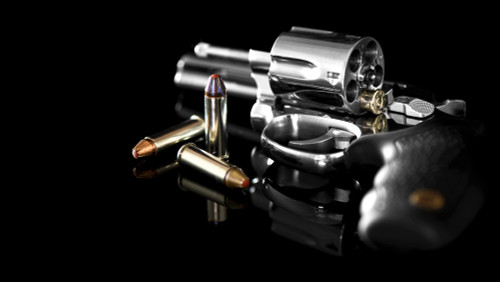
 Pro Armory Editorial Team
Pro Armory Editorial Team